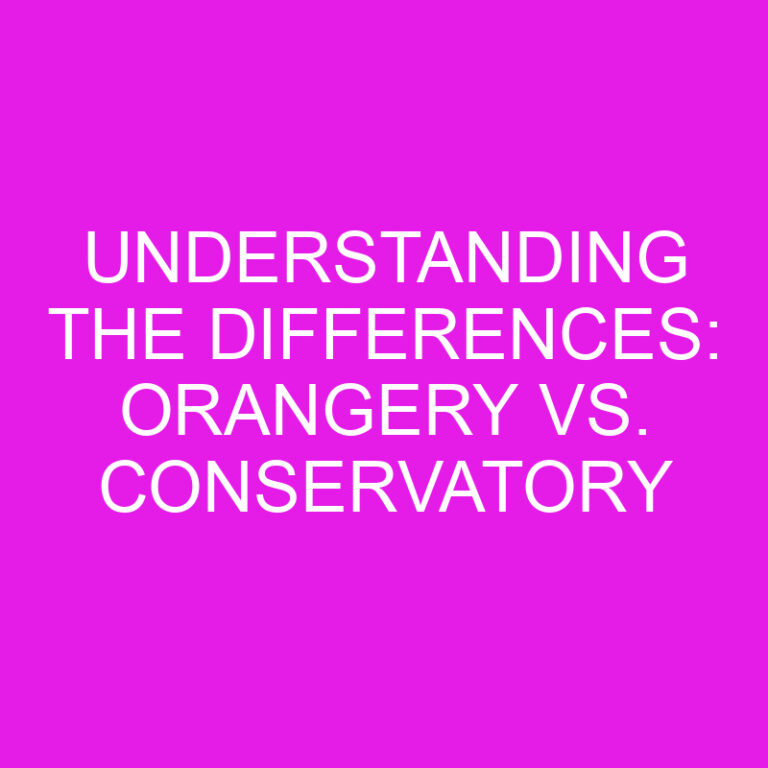
When it comes to language teaching and learning, there are various approaches that educators can adopt. Two commonly used methods are inductive and deductive language teaching. These approaches differ in their instructional strategies and the way they facilitate language acquisition. In this article, I’ll explore the key differences between inductive and deductive language teaching and learning, and how they impact language learners.
Inductive language teaching is a learner-centered approach that encourages students to discover language rules and patterns on their own. Instead of directly presenting grammar rules, teachers provide learners with examples and guide them to draw conclusions and make generalizations. On the other hand, deductive language teaching is a more teacher-centered approach where students are presented with explicit grammar rules and then given practice exercises to apply those rules. This method focuses on providing learners with a clear understanding of grammatical structures from the outset.
Understanding the differences between inductive and deductive language teaching and learning is crucial for educators to make informed decisions about their instructional strategies. By examining the advantages and disadvantages of each approach, teachers can create a balanced and effective language learning environment that caters to the diverse needs of their students. So, let’s dive deeper into the distinctions between these two methods and explore their implications for language acquisition.
Post Contents
- Key Takeaways
- Inductive Language Teaching
- Deductive Language Teaching
- Key Differences between Inductive and Deductive Language Teaching
- Advantages and Disadvantages of Inductive Language Teaching
- Advantages and Disadvantages of Deductive Language Teaching
- Implications for Language Acquisition
- Conclusion
- Frequently Asked Questions
- What is inductive language teaching?
- What is deductive language teaching?
- What are the advantages of inductive language teaching?
- What are the disadvantages of inductive language teaching?
- What are the advantages of deductive language teaching?
- What are the disadvantages of deductive language teaching?
- Is a combination of both approaches beneficial?
Key Takeaways
- Inductive language teaching is a learner-centered approach where students discover language rules and patterns on their own through examples and guidance.
- Deductive language teaching is a teacher-centered approach where explicit grammar rules are presented first and students are given practice exercises to apply those rules.
- Inductive teaching promotes active participation, critical thinking, and independent learning, while deductive teaching provides a clear framework for understanding the language.
- Inductive teaching involves example-based learning, guided discovery, collaborative learning, and contextualized learning.
- Deductive teaching focuses on rule-driven learning, often through teacher-led activities and structured exercises.
- Both approaches have advantages and disadvantages, and a combination of both may be beneficial for language learners, depending on their needs and goals.
Inductive Language Teaching
When it comes to language teaching, inductive approaches are gaining popularity among educators. This learner-centered approach places the emphasis on discovery and exploration in the language learning process.
In inductive language teaching, students are encouraged to analyze and infer language rules and patterns on their own. Rather than being presented with explicit grammar rules and explanations, they learn through examples and guidance. This allows them to actively engage with the language and develop a deeper understanding of its structure and usage.
So, how does inductive language teaching work in practice? Here are a few key characteristics:
- Example-based learning: Students are exposed to a range of examples that illustrate the target language structure or pattern. Through careful observation and analysis, they are encouraged to identify commonalities and form their own hypotheses about the rules that govern the language.
- Guided discovery: Teachers play a crucial role in guiding students’ exploration and helping them make meaningful connections. They provide scaffolding and ask thought-provoking questions to stimulate critical thinking and encourage students to reflect on their findings.
- Collaborative learning: In inductive language teaching, collaboration is often emphasized. Students work together in pairs or small groups to discuss their observations, share insights, and support each other’s learning. This fosters a sense of community and allows for peer-to-peer interaction and feedback.
- Contextualized learning: Inductive teaching aims to make language learning relevant and meaningful by incorporating authentic materials and real-life situations. It helps students see the practical applications of the language and understand how it is used in different contexts.
Inductive language teaching offers several advantages. It promotes active participation and critical thinking, allowing students to develop their analytical skills and problem-solving abilities. It also enhances their language awareness and helps them become independent learners who can apply their knowledge in authentic situations.
That being said, it’s important to recognize that inductive language teaching may not be suitable for every learner or every language learning goal. Some students may require more explicit instruction or benefit from a combination of inductive and deductive approaches.
Deductive Language Teaching
Deductive language teaching is another approach used in language instruction. In contrast to inductive teaching, deductive teaching follows a more traditional and teacher-centered approach.
In deductive language teaching, language rules and structures are presented to students first, usually through direct instruction by the teacher. The teacher provides clear explanations and examples of the rules, and students are expected to understand and apply them in their language usage. This approach assumes that learners need explicit instruction and guidance in order to successfully acquire and use the language.
One key characteristic of deductive language teaching is that it focuses on rule-driven learning. Students are given the rules and are encouraged to apply them in practice exercises. Grammar drills and structured exercises are common in deductive language teaching, helping students to reinforce their understanding of the rules.
Another aspect of deductive teaching is that it often involves teacher-led activities. The teacher takes a more prominent role in the classroom, providing instruction, correcting errors, and guiding students through the learning process. This approach can be useful in certain contexts where students benefit from direct instruction and clear guidance.
There are some advantages to deductive language teaching. First, it can provide learners with a clear and organized framework for understanding the language. The explicit presentation of rules and structures can help students grasp the underlying principles of the language. Second, deductive teaching can be efficient in terms of time as it allows for more focused and targeted instruction.
However, it’s important to note that deductive language teaching also has its limitations. While it can be effective for certain learners and language learning goals, it may not be as effective in promoting learner autonomy and critical thinking. It can also be less engaging and interactive compared to inductive teaching, as it relies more on teacher-centered instruction.
Deductive language teaching is a more traditional and teacher-centered approach that emphasizes explicit instruction and rule-driven learning. While it can provide learners with a clear framework for understanding the language, it may not be suitable for every learner or every language learning goal. Some students may benefit from a combination of both inductive and deductive approaches, depending on their individual needs and preferences.
Key Differences between Inductive and Deductive Language Teaching
When it comes to language teaching, there are two main approaches: inductive and deductive. While both approaches are effective in their own ways, they differ in terms of their focus, methodology, and learner involvement. In this section, I’ll highlight the key differences between inductive and deductive language teaching.
Focus:
Inductive language teaching focuses on learner-centered instruction, where students actively engage in discovering language rules and patterns through examples and guidance. The emphasis is on allowing learners to explore and make sense of the language on their own.
Deductive language teaching, on the other hand, follows a more teacher-centered approach. Here, the teacher presents language rules and structures first through direct instruction, and students then apply these rules in their practice. The emphasis is on providing learners with a clear framework for understanding the language.
Methodology:
In inductive language teaching, example-based learning takes center stage. Learners are exposed to authentic language examples, which serve as the basis for discovering the language rules and patterns. Through guided discovery, students are given prompts and support to analyze and uncover the underlying language rules themselves.
In deductive language teaching, the methodology revolves around rule-driven learning. Teachers present grammar rules and explanations explicitly, and students then practice these rules through various activities, such as grammar drills or teacher-led exercises. The focus is on direct instruction and applying the rules in practice.
Learner Involvement:
Inductive language teaching promotes active learner participation and critical thinking. By engaging in collaborative activities, learners are encouraged to think critically, analyze language examples, and make their own discoveries. This approach fosters a deeper understanding and helps develop learners’ language awareness.
Deductive language teaching, while providing a clear structure, may be less engaging and interactive compared to inductive teaching. Students may have fewer opportunities for independent exploration, and the focus may be more on following established rules rather than thinking critically.
By understanding these key differences, language teachers can make informed decisions about which approach best suits their learners’ needs and goals. It’s important to note that a combination of both inductive and deductive approaches may be beneficial, as it allows for a balanced approach to language teaching and learning.
Remember, the key to effective language instruction is to adapt and tailor the approach to the unique needs and preferences of your learners.
Advantages and Disadvantages of Inductive Language Teaching
I have discussed the differences between inductive and deductive language teaching approaches in the previous sections. Now, let’s explore the advantages and disadvantages of inductive language teaching specifically.
Inductive language teaching has several benefits that make it an effective approach for language learners. Some of the advantages include:
- Engaging and Interactive: Inductive language teaching encourages active participation and critical thinking. It allows students to discover language rules and patterns through examples and guidance. This creates an engaging and interactive learning environment, making the learning process more enjoyable and effective.
- Promotes Autonomy: By allowing students to explore and discover language rules on their own, inductive language teaching promotes learner autonomy. Students become independent learners who can analyze language and apply it in different contexts. This helps them develop problem-solving skills and become confident language users.
- Contextual Learning: Inductive language teaching provides learners with meaningful and authentic language examples. By analyzing these examples, students can grasp the underlying grammar rules and language structures in a real-life context. This enhances their understanding and retention of the language, making it more relevant and applicable.
Despite its advantages, inductive language teaching also has some drawbacks that need to be considered:
- Time-consuming: Inductive language teaching requires students to engage in a process of discovery and analysis. This can take more time compared to deductive teaching, where language rules are directly presented by the teacher. As a result, it may not be suitable for all learning environments, especially those with time constraints.
- Lack of Explicit Instruction: In inductive language teaching, learners are expected to derive language rules from examples and guidance. However, some learners may prefer explicit instruction, where rules are clearly explained and practiced. In such cases, the inductive approach may not meet their specific learning needs.
- Potential for Misunderstanding: Since inductive language teaching relies on learners’ interpretation and analysis of examples, there is a possibility of misunderstanding or misinterpretation of language rules. Teachers need to provide appropriate support and clarification to ensure students correctly understand the language concepts.
Advantages and Disadvantages of Deductive Language Teaching
When it comes to language teaching, the deductive approach has its own set of advantages and disadvantages. Let’s explore them:
Advantages of Deductive Language Teaching
- Clear and Concise: Deductive language teaching provides learners with direct instruction, making it easier for them to grasp new language rules and structures. The teacher presents the rules upfront, followed by examples to reinforce understanding.
- Efficient Use of Time: With deductive language teaching, learners can quickly acquire knowledge of grammar rules and vocabulary. This approach is ideal for learners who prefer a structured and organized learning experience.
- Explicit Instruction: In the deductive approach, language rules are explicitly taught, leaving less room for confusion or misinterpretation. Learners receive guidance from the teacher, ensuring they understand the correct application of grammar and language concepts.
- Less Interactive: Deductive language teaching is primarily teacher-centered, leaving limited opportunities for student participation and interaction. This can hinder the development of speaking and listening skills, as learners may not get enough practice in real-life communication scenarios.
- Limited Contextual Learning: With the focus on presenting language rules and structures directly, deductive teaching may not provide learners with enough exposure to authentic and meaningful language use in different contexts. This can impact their ability to apply language skills effectively in real-world situations.
- Overemphasis on Grammar: Deductive language teaching often places a heavy emphasis on grammar, which can lead to learners prioritizing accuracy over fluency. It may create a perception that language mastery is solely dependent on knowing the rules, rather than developing practical communication skills.
While deductive language teaching has its merits, it is crucial to strike a balance between deductive and inductive approaches based on learners’ needs and preferences. Combining elements from both approaches can create a well-rounded and effective language learning experience.
Remember, the choice of teaching method may vary depending on the specific learning goals, learners’ proficiency levels, and the content being taught. It’s important to consider the advantages and disadvantages of each approach and make informed decisions to cater to the diverse needs of language learners.
Implications for Language Acquisition
##Implications for Language Acquisition
When it comes to language acquisition, the choice between inductive and deductive language teaching can have significant implications. Each approach offers its own benefits and drawbacks, and understanding these can help language learners and educators make informed decisions.
###Inductive Language Teaching and Learning
Inductive language teaching places a strong emphasis on learner engagement and active participation. By allowing students to discover language rules and patterns through examples and guidance, this approach promotes a deeper understanding and ownership of the language.
The implications of inductive language teaching for language acquisition include:
- Promotion of learner autonomy: Inductive teaching empowers learners to take ownership of their learning process and develop problem-solving skills.
- Contextual learning: The focus on examples and real-life situations allows learners to understand how language is used in different contexts, making it more meaningful and memorable.
- Engagement and interaction: Inductive teaching encourages collaboration, discussion, and critical thinking, fostering a more interactive learning environment.
However, it is important to consider the potential challenges of inductive language teaching. Some implications to consider include:
- Time-consuming: Inductive teaching can be more time-consuming than its deductive counterpart due to the need for exploration and analysis.
- Lack of explicit instruction: While inductive teaching encourages learners to discover language rules independently, some students may require more explicit instruction to grasp certain concepts.
- Potential for misunderstanding: Without clear guidance, learners may misinterpret language patterns and rules, leading to inaccuracies in their language production.
###Deductive Language Teaching and Learning
In contrast to inductive teaching, deductive language teaching follows a more structured and teacher-centered approach. Language rules and structures are presented through direct instruction, allowing learners to understand and apply them immediately.
- Clear and concise instruction: Deductive teaching provides learners with straightforward explanations of language rules, making it easier to comprehend and apply them.
- Efficient use of time: The direct instruction approach allows for a more focused and efficient use of classroom time.
- Explicit instruction: Deductive teaching ensures that learners receive explicit instruction on fundamental language concepts.
- Less interactive: Deductive teaching may limit opportunities for learner engagement and interaction, as it primarily relies on teacher instruction.
- Limited contextual learning: The focus on
Conclusion
Both inductive and deductive language teaching approaches have their advantages and disadvantages. Inductive teaching allows learners to actively engage in the discovery of language rules and patterns, promoting learner autonomy and contextual learning. On the other hand, deductive teaching provides clear and concise instruction, ensuring efficient use of time and explicit instruction.
To maximize language acquisition, it is important to consider the needs and preferences of learners. A combination of both approaches can be beneficial, allowing for a balanced and comprehensive language learning experience. By incorporating elements of inductive teaching, learners can actively participate in the learning process and develop a deeper understanding of language rules. At the same time, incorporating elements of deductive teaching ensures that learners receive explicit instruction and develop a solid foundation of language knowledge.
Ultimately, the choice between inductive and deductive language teaching should be based on the specific goals, preferences, and learning styles of the learners. By carefully considering the advantages and disadvantages of each approach, educators can make informed decisions to cater to the diverse needs of language learners.
Frequently Asked Questions
What is inductive language teaching?
Inductive language teaching is a learner-centered approach where students discover language rules and patterns through examples and guidance.
What is deductive language teaching?
Deductive language teaching is a teacher-centered approach where language rules and structures are presented through direct instruction.
What are the advantages of inductive language teaching?
Inductive language teaching promotes learner autonomy, contextual learning, and engagement.
What are the disadvantages of inductive language teaching?
Inductive language teaching can be time-consuming, lack explicit instruction, and may lead to potential misunderstandings.
What are the advantages of deductive language teaching?
Deductive language teaching provides clear and concise instruction, efficient use of time, and explicit instruction.
What are the disadvantages of deductive language teaching?
Deductive language teaching is less interactive, limits contextual learning, and may overemphasize grammar.
Is a combination of both approaches beneficial?
A combination of both approaches may be beneficial, depending on the learners’ needs and preferences. It is important to consider the advantages and disadvantages of each approach and make informed decisions to cater to the diverse needs of language learners.






